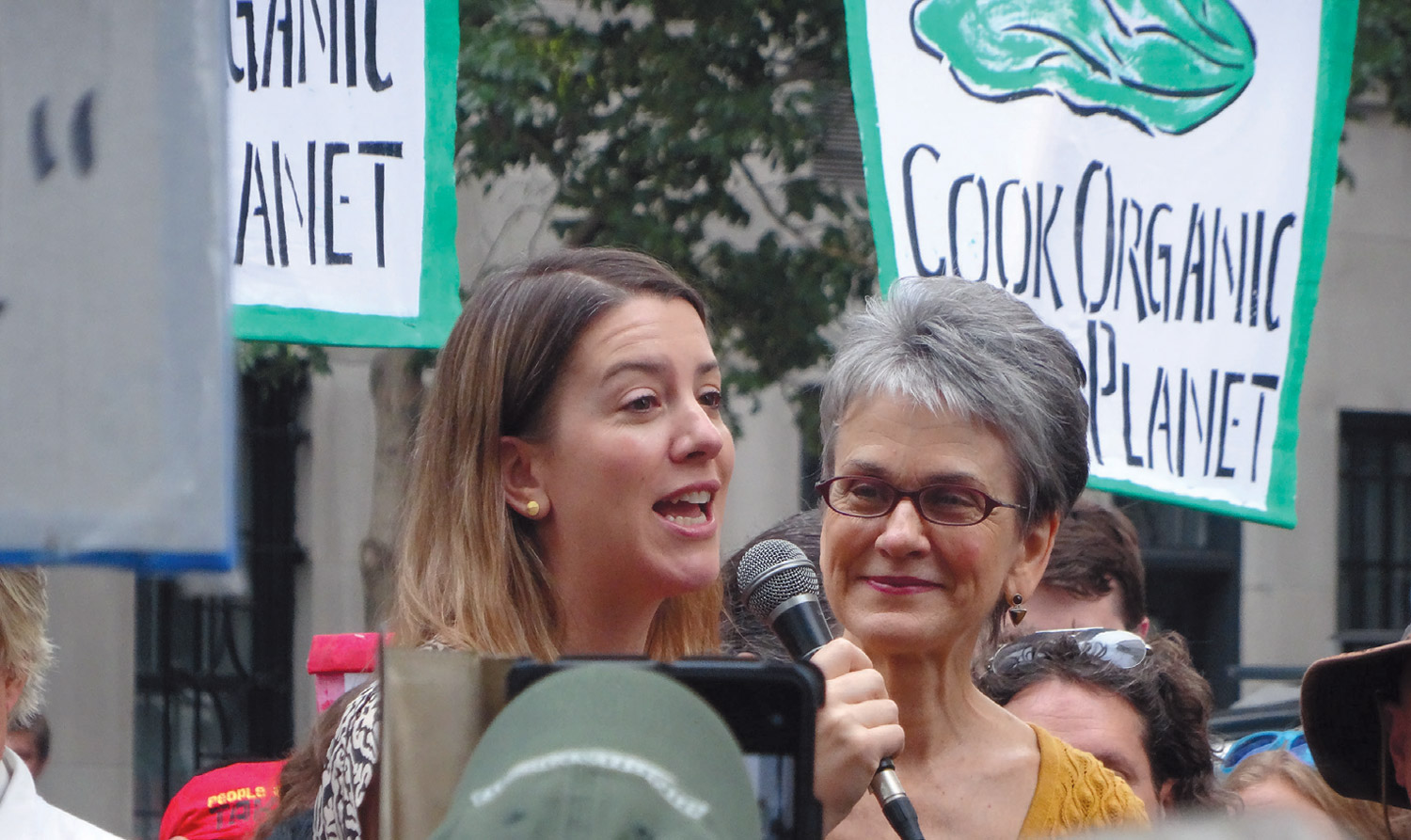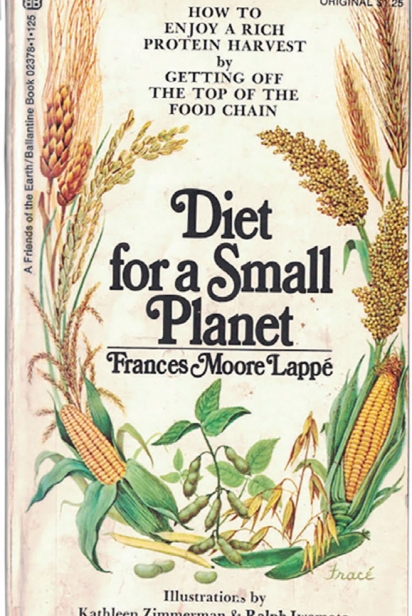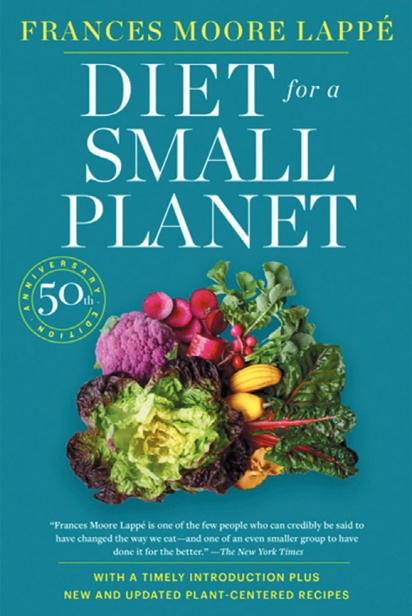Farming & Eating to Fight Climate Chaos
When I wrote Diet for a Small Planet fifty years ago, questioning a meat-centered diet built on large-scale, chemically addicted agriculture meant you were a naive “back to the lander.” Since then, we’ve seen a revolution in awareness: Transforming how we farm and eat is increasingly recognized as essential—both to personal and environmental health. It is also now understood as key in tackling the climate crisis.
Why is transforming our food system so essential? Let’s dive in.
Globally, food systems generate as much as 37% of greenhouse gas emissions.
Of that, land use alone—farming, grazing, felling forests, and more—amounts to almost a quarter. So, get this: Even if the world immediately cut all fossil fuel emissions for energy, our food-system emissions alone would make it impossible to meet the targets for limiting climate change set in the 2015 Paris Agreement.
From agriculture, carbon dioxide is released during deforestation and subsequent burning (mostly to grow feed) as well as from decaying plants. It is also emitted in the manufacturing and distribution of chemical fertilizers.
Globally, the food system is a key source for methane and nitrous oxide, which are 34 and up to 300 times more potent as heat-trapping gases respectively.
Ruminant livestock like cattle and sheep are a source of methane from their digestion process. Confined animal feeding operations are also a source of methane from animal waste; rice paddy cultivation is another. Nitrous oxide is released largely by manure and manufactured fertilizers. Producing nitrogen fertilizer itself is incredibly energy-intensive, requiring more than 25,000 BTU per pound to produce.
In addition to these concerning greenhouse gas emissions, our food system—driven by pressure to bring the highest return to ever-larger farm operations, corporate suppliers, and food processors—disrupts nature’s regenerative capacities. The result is rapid depletion and destabilization of the complex systems that we need to grow food.
Today’s dominant farming techniques have “disrupted the nitrogen cycle even more than the carbon cycle,” University of Virginia environmental sciences professor James Galloway, a leading authority, explained to me.
In the United States, nitrogen runoff from agricultural fields seeps into streams and rivers and from there into the mighty Mississippi and then into the Gulf of Mexico, where it has created a coastal “dead zone” almost the size of Massachusetts, killing marine life.
Runoff, explains Professor Galloway, also worsens climate heating, smog, acid rain, loss of marine species and forests, well-water pollution and the stratospheric ozone hole.
Whoa. And meat production is key in all this harm.
58% of the biomass harvested globally enters the livestock system as feed or bedding for animals, while only 12% is used directly as human food. Cows alone pack such a punch that, if they were a nation, “cow country” would rank as the world’s sixth worst greenhouse gas emitter. If food waste were a country, it would rank higher still—as the third worst.
If we achieve a societal shift toward plant-based diets, we can reduce greenhouse gas emissions from farming by as much as 70% by 2050—and by even more if we cut food loss and waste, predict the University of Oxford’s Marco Springmann and colleagues.
Other encouraging measures of what this shift could achieve?
Worldwide, if those eating meat-centered diets moved to popular low-meat or no-meat fare, emissions could be “reduced by an amount equal to the current greenhouse gas emissions of all cars, trucks, planes, trains and ships,” calculate University of Minnesota’s David Tilman and Michael Clark. That’s huge.
And note, the plant-based nutrient balance is hardly novel, as it’s what nourished humans throughout our evolution and still characterizes many Indigenous diets today.
Plant-centered eating also reduces incentives to fell carbon-absorbing forests to graze livestock and grow feed. Our dietary shift away from meat could “prevent the destruction of an area of tropical forests and savannas as large as half of the United States,” Tilman and Clark also estimate. One reason that’s a good thing is that it reduces the risk of new pandemics: We know felling forests for farms and grazing brings humans into greater contact with wildlife that can transmit viruses.
Our food system’s emissions can also be reduced by more localization and less processing, packaging, refrigeration, as well as better waste management.
Some propose shifting to grass-fed beef as part of the climate cure, but such a shift would have to involve a massive reduction in consumption. In the United States, pastureland could only support just over a quarter of our current demand for beef, one study found. And experts are still debating the climate-harming emissions of grass-fed versus feedlot-fed beef.
Something we know for sure is that growing food ecologically without chemicals offers climate pluses: It uses half the energy and generates only a third of the greenhouse gases per acre compared to corporate, chemical-dependent farming. Plus, while all plants take in atmospheric carbon and sequester it in the soil, soils farmed ecologically hold more carbon.
In addition to these positives, ecological farming helps restore the species richness decimated by agricultural pesticides and is key in meeting our nitrogen-overload crisis. Instead of chemical fertilizers, it uses nitrogen that soil microorganisms generate, effectively recycling it. And here’s a not-so-radical nitrogen solution. How about we all consume only the protein we need to be healthy? For many countries, including ours, that’s about half our average intake.
These findings show us what’s possible if we move toward what I call plant-and-planet-centered diets.
Fifty years ago, I didn’t foresee the climate crisis that would make my book’s message even more urgent. Today, we know so much more about how our dietary choices—and the public policies that shape them—aid or upend the environment, our health, equity and democracy itself.
Let our food choices remind us daily of the power we each have to enhance our earth’s capacities to meet the climate crisis.
This story features topics explored in the 50th Anniversary Edition of Diet for a Small Planet. dietforasmallplanet.org







